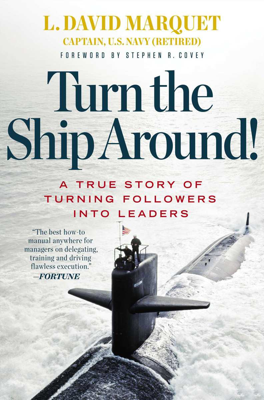Call to Action
Command Preparation on USS Santa Fe
David Marquet focuses on familiarizing himself with USS Santa Fe by directly interacting with the crew, deviating from the typical procedural review of records. He emphasizes learning about the crew's concerns and the effectiveness of their tools, exemplified by the inadequate flashlights that eventually lead to crew members acquiring functional ones. This observation illustrates broader issues on the ship, a focal point Marquet is keen on addressing.
Observations of Leadership and Communication Issues
During a routine department head meeting and other interactions, Marquet observes significant communication and leadership deficiencies: - Late Start and Attendance Issues: Delayed start times and the captain's absence until everyone assembled indicate a lack of punctuality and potentially deeper issues of discipline and respect. - Engagement Levels: The attendees display varying levels of engagement, from frustration to boredom, signaling ineffective communication and potentially low morale within the leadership team.
Specific Frustrations among Leadership
Lieutenant Dave Adams (Weps), discusses the obstructions he faces in implementing his vision for the department due to lack of support from the chain of command and lack of initiative from subordinates. His frustration reflects a systemic problem where innovative ideas are stifled, and leaders feel unsupported. This builds a case for shifting from a leader-follower model to a leader-leader framework.
Systemic and Procedural Inefficiencies
Marquet learns about bureaucratic inefficiencies such as the convoluted process for approving leave, which he identifies as a systemic failure rather than individual negligence. This reinforces his perception that the ship's administrative processes are overly complicated and ineffective, adversely affecting the crew's morale and efficiency.
Mismanagement and Missed Opportunities
The handling of internal communications and ceremonies on USS Santa Fe indicates a disconnection between the crew and leadership. Key communication from the captain is not audible to most of the crew, and award ceremonies lack proper planning and recognition, missing opportunities for morale boosting and public relations.
Conclusion and Resolve for Leadership Change
Identifying both the desire for improvement among the crew and the significant areas needing reform, Marquet concludes that there is an eagerness for change which he can leverage to implement new leadership strategies. He commits to transforming the traditional operational methods, resolving to apply the leadership initiatives he once attempted on USS Will Rogers.
Reflective Questions
The chapter ends with questions motivating readers to evaluate the current state of their organization in terms of need for change, comfort with status quo, complacency levels, and the nature of leadership—whether it's more controlling or empowering.
